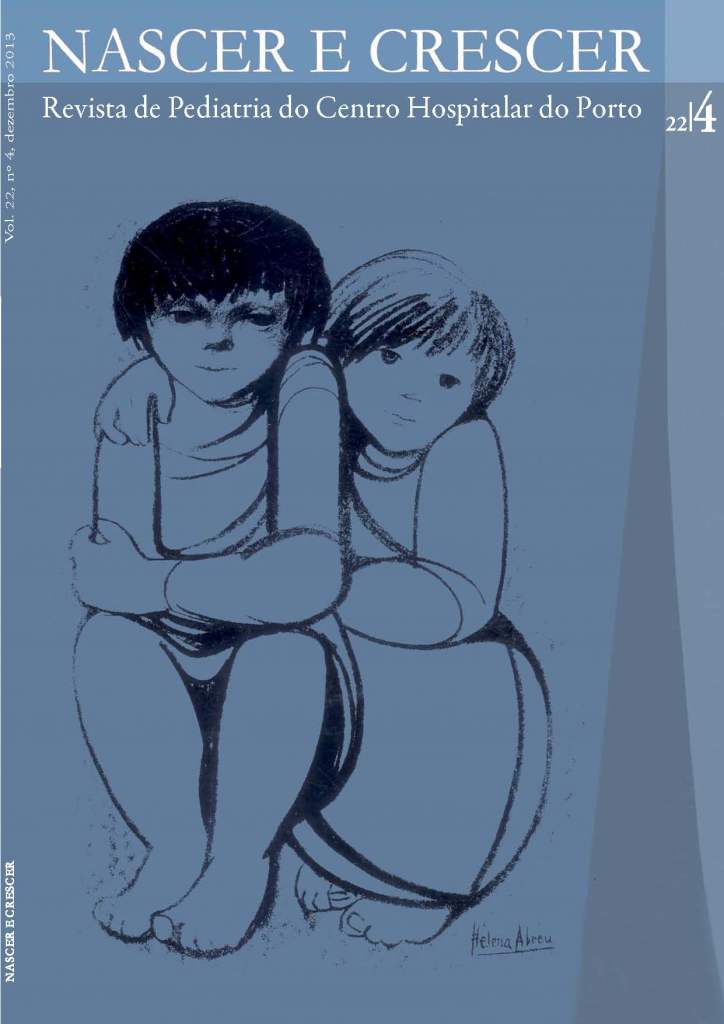ADMISSIONS FOR CERVICAL LYMPHADENITIS IN A GENERAL PAEDIATRICS UNIT
DOI:
https://doi.org/10.25753/BirthGrowthMJ.v22.i4.9756Keywords:
Abcesso, adenite, criança, linfadenite cervical, tuberculoseAbstract
Introduction: Cervical lymphadenitis (CL) is a common condition in children. Acute bilateral CL is the most frequent presentation, usually self-limited and caused by virus. Acute unilateral CL is commonly bacterial, most frequently caused by Streptococcus pyogenes and Staphylococcus aureus. Bartonella, Mycobacteria and Toxoplasma must be considered when the CL is subacute/chronic.
Objective: Characterization of children with CL hospitalized in a paediatric unit. Population and methods: Retrospective comparative study of a convenience sample that includes inpatient children, between March 1999 and February 2010.
Results and Discussion: Sixty-one patients were identified, 88,5% female. All CL were infectious. Acute CL was observed in 88,5% of cases (57,4% unilateral and 31,1% bilateral). Subacute/chronic CL occurred in 11,5%. The average age in acute cases was significantly lower than in subacute /chronic ones (p=0,034). Bacterial CL occurred in 96,7% and the remaining cases included infectious mononucleosis (n=1) and ganglionar toxoplasmosis (n=1). S. aureus and S. pyogenes were isolated in 66,6% of the patients. In addition, Mycobacterium tuberculosis was identified in three cases, Bartonella henselae in two and Ricketsia conorii in two. Previous head and neck infections were found in 27 patients (44,3%) with CL. Preceding viral infections were found in five cases. Cervical and submandibular nodes were the most frequent involved, 47,5% and 44,3% respectively. Fever was present in 85,2% and regional complaints (torticollis and trismus) in 45%. In 29%, the nodes developed fluctuation and 24,6% needed surgical drainage. Six (9,8%) patients underwent fine -needle aspiration and 45 had image studies performed. Leukocyte count > 15000/μL and positive C Reactive Protein (>3 mg/dL) were present in 83,6% and 65,5% respectively. S. pyogenes and S. aureus infections were associated more frequently with skin inflammatory signs and need for surgical drainage (p=0,01). Antibiotics were used in all patients, most commonly amoxicillin -clavulanate (57,3%) and flucloxacillin (19,7%). The outcome was favourable in all patients.
Conclusion: Aetiology identification for CL can be challenging. Although the majority of children with CL can be managed in an outpatient setting, there are cases that require in-hospital diagnostic investigation or intensive care. Since Portugal presents a medium incidence of tuberculosis, clinicians should maintain a high -level of suspicion for the emergence of multiresistant M. tuberculosis.
Downloads
References
Thorell EA, Chesney PJ. Cervical Lymphadenitis and Neck
Infections. In: Long SS, Pickering LK, Prober CG, eds. Principles
and Practice of Pediatric Infectious Diseases. Churchill
Livingstone 2008. (Versão electronic, CD).
Swanson DS. Etiology and clinical manifestations of cervical
lymphadenitis in children. In: Basow DS, eds. UpToDate.
Waltham, MA; 2010.
Swanson DS. Diagnostic approach to and initial treatment of
cervical lymphadenitis in children. In: Basow DS, eds. UpTo-
Date. Waltham, MA; 2010.
Leung AKC, Robson WLM. Childhood Cervical Lymphadenopathy.
J Pediatr Health Care 2004; 18:3 -7.
Peters TR, Edwards KM. Cervical Lymphadenopathy and
Adenitis. Pediatr Rev 2000; 21:399 -404.
Luu TM, Chevalier I, Gauthier M, Carceller AM, Bensoussab
A, Tapiero B. Acute adenitis in children: Clinical course and
factors predictive of surgical drainage. J Pediatr Child health
; 41:273 -7.
Dulin MF, Kennard TP, Leach LL, Williams R. Management of
Cervical Lymphadenitis in Children. Am Fam Physician 2008;
:1097 -8.
Leung AK, Robson WL. Childhood cervical lymphadenopathy.
J Pediatr Health Care 2004; 18:3 -7.
Marques L, Mesquita S, Tavares E, Guedes M. Consensos
em Infecciologia Pediátrica – Febre escaro -nodular. Acta Pediatr
Port 2005; 36:257 -63.
Heller HM. Toxoplasmosis in imunocompetent hosts. In: Basow
DS, eds. UpToDate. Waltham, MA; 2010.
Fonseca -Antunes A. Programa Nacional de Luta Contra a
Tuberculose - Ponto da situação epidemiológica e de desempenho.
Relatório para o dia mundial da tuberculose. DGS,
Março 2011. Disponível em: URL: www.dgs.pt
Timmerman MK, Morley AD, Buwalda J. Treatment of non-
-tuberculous mycobacterial cervicofacial lymphadenitis in
children: critical appraisal of the literature. Clin Otolaryngol
; 33:546 -52.
Downloads
Published
How to Cite
Issue
Section
License
Copyright and Authors' Rights
All articles published in Nascer e Crescer - Birth and Growth Medical Journal are Open Access and comply with the requirements of funding agencies or academic institutions. For use by third parties, Nascer e Crescer - Birth and Growth Medical Journal adheres to the terms of the Creative Commons License "Attribution - Non-Commercial Use (CC-BY-NC)".
It is the author's responsibility to obtain permission to reproduce figures, tables, etc. from other publications.
Authors must submit a Conflict of Interest statement and an Authorship Form with the submission of the article. An e-mail will be sent to the corresponding author confirming receipt of the manuscript.
Authors are permitted to make their articles available in repositories at their home institutions, provided that they always indicate where the articles were published and adhere to the terms of the Creative Commons license.


